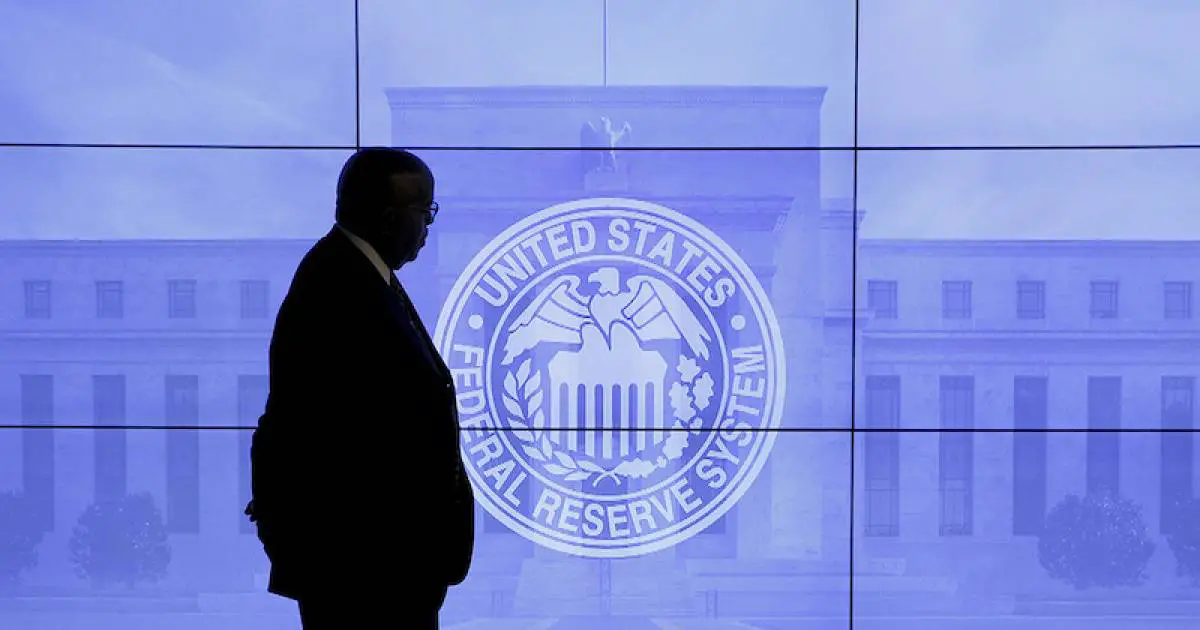Fed’s Quantitative Tightening of Its Asset Holdings Is Already Priced-In by Markets

A security guard walks by an image of the Federal Reserve. Kevin Lamarque/Reuters.
The Federal Reserve starts reducing its enormous $9 trillion balance sheet today (Wednesday June 1, 2022), but the negative impact on stock markets is likely to be minimal, says the CEO of one of the world’s largest independent financial advisory, asset management and fintech organizations.
The bullish assessment from deVere Group’s Nigel Green, comes as the U.S. central bank begins its wind-down of its $9 trillion in asset holdings. For two years, the Fed bought over $4 trillion in assets, mostly focused on U.S. Treasuries and agency mortgage-backed securities.
Starting on Wednesday, it will start shrinking these holdings by $47.5 billion per month for the first three months. After this, the total amount to be reduced increases to $95 billion a month, with policymakers prepared to modify their stance should it be necessary to do in the light of economic and financial developments.
“The process is designed to support interest rate hikes, which are being used in the battle against red-hot inflation,” says Mr Green. “It’s being rolled out at a faster pace than when the Fed last attempted to shrink the balance sheet.”
The move is leading to some investor jitters and nerves because, unlike quantitative easing, quantitative tightening slashes the money supply. It fuels inflation-adjusted yields, which in theory is bad for stock markets.
“So, it’s another headwind for stocks and other risk assets,” Green says. “But whilst there might be a sudden knee-jerk reaction from the markets, the impact is likely to be minimal. Why? Because it’s already largely priced-in. The Chair of the Fed, Jerome Powell, has already told us what’s coming. The markets know what to expect. And, as we more or less know the path in this regard, investors can invest accordingly.”
The deVere CEO is confident that the lingering bear sentiment is over. Last week, he noted that the markets “have been shaken in recent months, but now I’m calling it: the bottom is very close.”
One good indicator that the bottom is near is that tracking services reveal that ‘insiders’ are on a buying spree. They’re taking advantage of reasonable valuations to top-up stakes in quality companies in order to create and grow wealth in the longer term.
An insider is a director, senior officer, entity, or individual that owns more than 10% of a publicly-traded company’s voting shares.
“If stock markets wobble on Wednesday on the Fed’s move to slash its $9 trillion balance sheet, it’ll just be that: a wobble, as the markets have priced-in the central bank’s plans,” Nigel Green concludes. “Furthermore, we expect a market bounce imminently, meaning investors should be positioning portfolios to take capitalize on this.”












![Over 50% of American Adults Have Not Read a Book in Past Year [Study]](/sites/default/files/styles/video_thumbnail_bottom/public/older-man-reading-book-in-library.jpg?itok=m7DlbWgZ)







